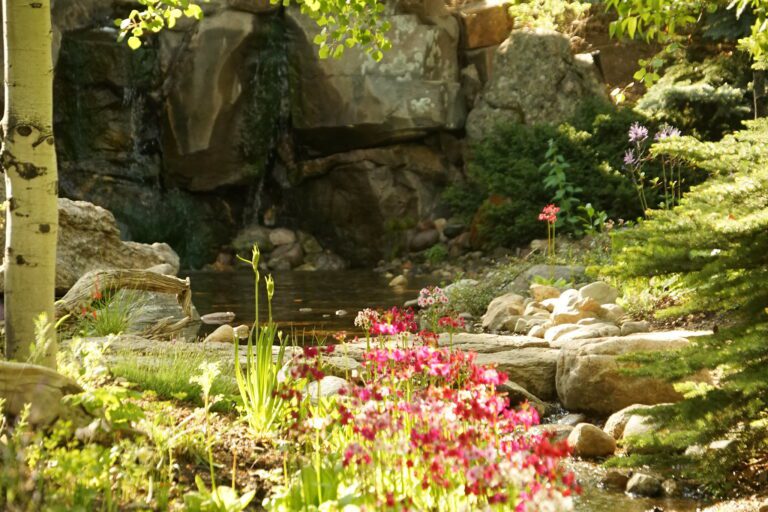On January 12, 2021, Betty Ford Alpine Gardens hosted an inspiring presentation with Curator Nick Courtens, diving into the vision and creation of the Caucasus Garden, a stunning rock garden nestled in Ford Park. This event offered visitors a rare glimpse into the artistry, science, and dedication involved in crafting a garden that captures the essence of the Caucasus Mountains’ alpine flora.
A Curator’s Vision
Nick Courtens, a passionate steward of alpine plants, began the presentation by sharing his inspiration for the Caucasus Garden. He described how the idea originated from a desire to showcase the unique and diverse plant life of the Caucasus region, which stretches between the Black Sea and the Caspian Sea. Known for its dramatic landscapes, rich biodiversity, and high-altitude ecosystems, the Caucasus Mountains offered a perfect model for an alpine garden that could educate and delight visitors.
Courtens explained that the garden was designed not only for beauty but also for education. “We wanted visitors to see these plants thriving in a setting that mirrors their natural environment,” he said. By carefully replicating the rock formations, soil types, and microclimates of the Caucasus, the garden offers an immersive experience that highlights the resilience and adaptability of alpine flora.
Designing the Landscape
The creation of the Caucasus Garden involved meticulous planning and careful attention to detail. Courtens walked attendees through the design process, starting with the selection of rocks, soil, and drainage systems to mimic high-altitude conditions. The rock placements were designed to create natural-looking slopes, crevices, and terraces where plants could flourish.
Soil composition was a critical factor. Alpine plants often thrive in well-draining, nutrient-poor soils. By replicating these conditions, the garden ensures that each plant has the environment it needs to grow as it would in the wild. Courtens also discussed the importance of sunlight exposure, wind patterns, and seasonal water availability, all of which were carefully considered to create microhabitats for different species.
Plant Selection and Conservation
One of the most captivating parts of the presentation was Courtens’ discussion of plant selection. The Caucasus region hosts a remarkable variety of endemic and rare species, many of which are not widely known outside their native range. The garden features dwarf conifers, alpine perennials, and delicate wildflowers, each chosen for its ability to thrive in a high-altitude, rocky setting.
Beyond aesthetics, the garden plays a crucial role in plant conservation. By cultivating rare and threatened species, Betty Ford Alpine Gardens contributes to preserving global biodiversity. Courtens emphasized that visitors can learn about the importance of protecting alpine habitats and the threats these ecosystems face from climate change and human activity.
Challenges and Triumphs
Creating the Caucasus Garden was not without challenges. Courtens shared stories of trial and error, from plants that struggled to adapt to unexpected conditions to engineering solutions for water management on steep rocky slopes. Yet, each obstacle offered an opportunity to learn and innovate, resulting in a garden that is both resilient and visually stunning.
An Invitation to Explore
By the end of the presentation, attendees gained a deeper appreciation for the thought, skill, and dedication that went into creating the Caucasus Garden. Courtens’ passion for alpine plants was contagious, inspiring visitors to explore the garden with fresh eyes and a curiosity for the stories each plant tells.
The Caucasus Garden at Ford Park is more than just a display of exotic alpine flora; it is a living classroom, a work of art, and a testament to the power of thoughtful design in connecting people to the natural world. Visitors leave not only with memories of a breathtaking garden but also with an understanding of the intricate relationships between plants, their habitats, and the hands that nurture them.
Whether you are an avid gardener, a nature enthusiast, or someone seeking inspiration, the Caucasus Garden offers a journey into the high mountains of the Caucasus, right in the heart of Vail.





